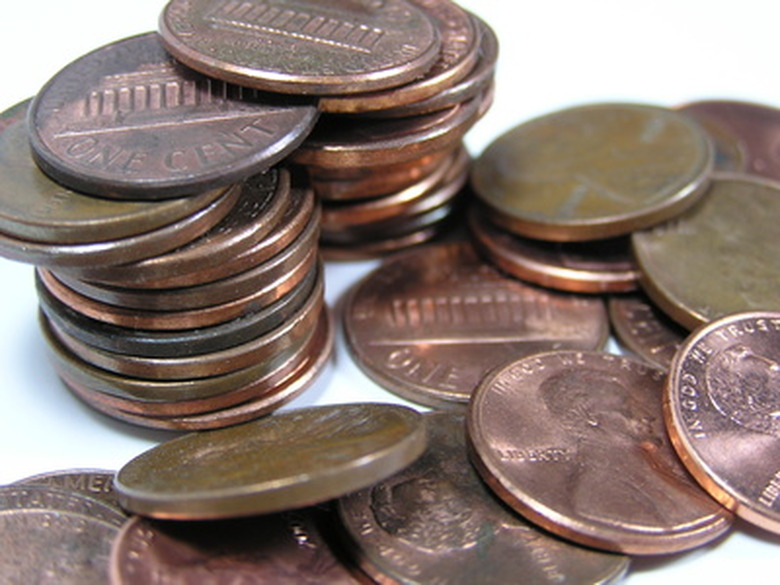How To Use An Array In Mathematics To Find Factors Of A Number
An array shows multiplication tables using objects. This is an easier approach for younger elementary students to visualize, rather than memorize, multiplication tables. For example: 3 x 4 = 12. To make an array to show this, you could use pennies to make three rows of four. This method can also be used to find the factors of a number in an easier way. Arrange arrays using coins, blocks or drawing dots on a piece of paper.
Step 1
Find factors of 12 using the pennies to make different arrays.
Step 2
Lay down the pennies, 12 at time only, to form different and even arrays. The arrays must be made evenly. To start, lay down 12 pennies in a straight line. This line represents one row of 12 columns, or 12 x 1 = 12; therefore, 12 and one are considered factors of 12.
Step 3
Lay down a second set of pennies to form a different and even square or rectangle. Form two rows of six columns each (or six rows of two columns). This represents 2 x 6 = 12; therefore, two and six are factors of 12.
Step 4
Lay down the last set of pennies to form an even square or rectangle. Form three rows of four columns (or four rows of three columns). This represents 3 x 4 = 12; therefore, three and four are factors of 12.
Step 5
Combine all of your arrays to compile all of the factors of 12: one, 12, two, six, three and four. Put these numbers in numerical order and you're finished:
One, two, three, four, six and 12 are all factors of the number 12.
Cite This Article
MLA
Griffith, Andrea. "How To Use An Array In Mathematics To Find Factors Of A Number" sciencing.com, https://www.sciencing.com/use-array-mathematics-factors-number-6531298/. 24 April 2017.
APA
Griffith, Andrea. (2017, April 24). How To Use An Array In Mathematics To Find Factors Of A Number. sciencing.com. Retrieved from https://www.sciencing.com/use-array-mathematics-factors-number-6531298/
Chicago
Griffith, Andrea. How To Use An Array In Mathematics To Find Factors Of A Number last modified August 30, 2022. https://www.sciencing.com/use-array-mathematics-factors-number-6531298/
